When Victorian artist Amanda (Mandy) Nelson responded to a call-out for a visiting artist within an Artist in Residency program offered by the City of Greater Dandenong, the brief she was guided by centred around an Up in the Sky theme.
Her mission, to meet that brief, was to work with primary-aged students at Keysborough Primary School, in Melbourne’s southeast, and help them create an exhibition. Once complete, the students’ artistic endeavours were showcased at the Springvale Community Hub for Arts as part of Greater Dandenong’s WOW exhibition.
“My starting point was to visit the exhibition space, which is closely connected to Springvale’s library,” Ms Nelson told EducationDaily. “I love libraries. My aunt was a children’s librarian and so I’ve grown up with a strong appreciation of children’s literature and folktales. There seemed to be some synergy with my interest in artists who explore transformation, (a recurring theme in so many folktales), so I researched a number of stories to provide a starting point for the project.”
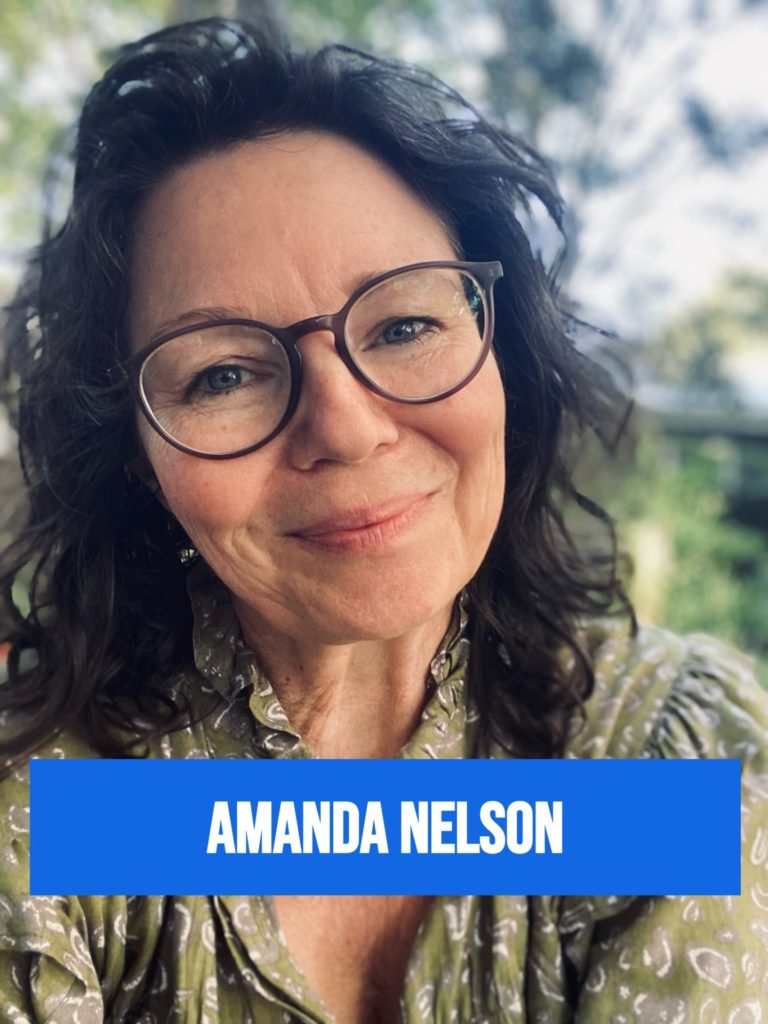
When artists meet students, engagement increases
The Artist in Residency program was designed to provide opportunities for professional artists to work with young people in Victorian primary and secondary schools.
The program provides funding for schools to engage an artist to work with students and teachers on a creative project in any art form. The program generates innovative ways to engage students across the curriculum and provides students, teachers and artists with diverse and challenging experiences.
Having visiting artists come to schools is invaluable to the students, Keysborough Primary School teacher Voula Koskolos told EducationDaily. “They get to experience new techniques, highlight creative skills, and promote the arts. It gives children the chance to be heard, to be creative, and to broaden their ideas of the arts beyond the primary classroom.”
As well as boosting student engagement and creativity, Ms Koskolos says visiting artists can also help boost the students’ self-esteem, collaboration skills and sense of belonging.
“The children really enjoyed having a ‘real’ visual artist in our school,” she says. “They experienced a new way of working and allowed themselves to be creatively free with the concept and medium Mandy presented. Our students made interesting paper, which Mandy then took to create an artwork, so the children had no idea what the finished piece would look like. This created interest within our community and families attended the exhibition to celebrate their children and Mandy’s work.”
Libraries, literature, and inspiration from words
For the group of Keysborough Primary School students, Ms Nelson says she thought – thematically speaking – folktales would be ideal to explore.
“I searched for stories that had bird references to align with ‘up in the sky’ and found a beautiful folktale that had iterations across Asia, and parallels to Western stories,” Ms Nelson told EducationDaily.
After adapting the story to have a female protagonist, Ms Nelson devised a plan to illustrate elements of the story on a large scale to fit the ‘up in the sky’ theme.
“Then I researched techniques that would create a sense of materiality, while being achievable within the limitations of class times, project timeline and budget… and fitting with the idea of transformation,” she says.
The next step was submitting her Expression of Interest (EOI) and, when she found out she was successful, Ms Nelson says she then experimented and refined the concept until running the workshops with the enthusiastic school students.
Creative collaboration enriches everyone involved
“Working collaboratively on a creative project is such an enriching process,” says Ms Nelson, who has been working in arts – mostly within community settings – for around ten years. “I learn a lot about the people I’m working with, too, of course, which enhances my practice. I hope that extends to an educational setting as well.”
Educators, she says “do such amazing work, and as a society we ask a lot of them”.
“I think that bringing in specialist from outside the immediate school community supports teachers in delivering diverse programming,” Ms Nelson says. “New combinations of ideas, ways of thinking, and creative approaches to problem-solving is what those collaborations are all about.”
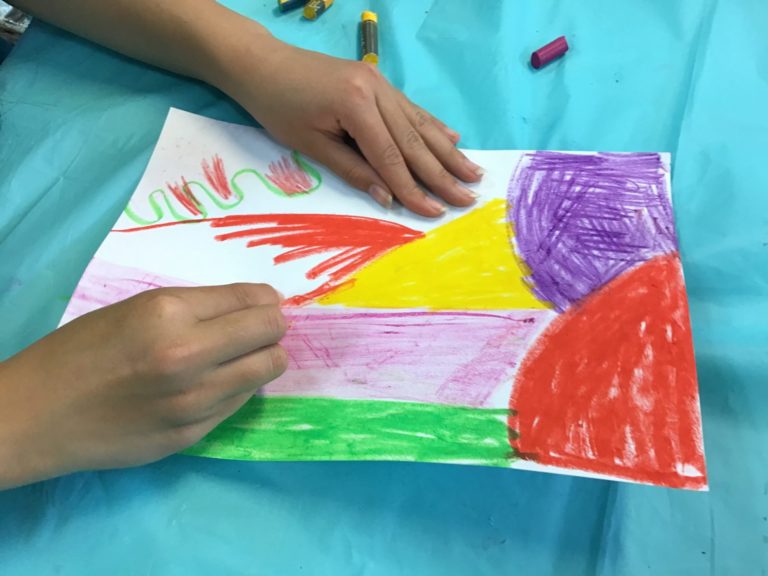
The workshops focussed on drawing and started with some warm-up exercises followed by expressive mark making using wax/oil-based crayons and pastels for their immediacy and to create a resist with watercolour paint. I encouraged the students to relax into drawing, focusing on the process rather than outcome and then incorporating imagined perspectives. The coloured papers that the students made, we then manipulated/massaged with vegetable oil to create ‘paper fabric’. At that stage, the drawings had become something completely different – very textural and vibrant.
“The outcome was a big pile of beautiful paper,” Ms Nelson told EducationDaily.
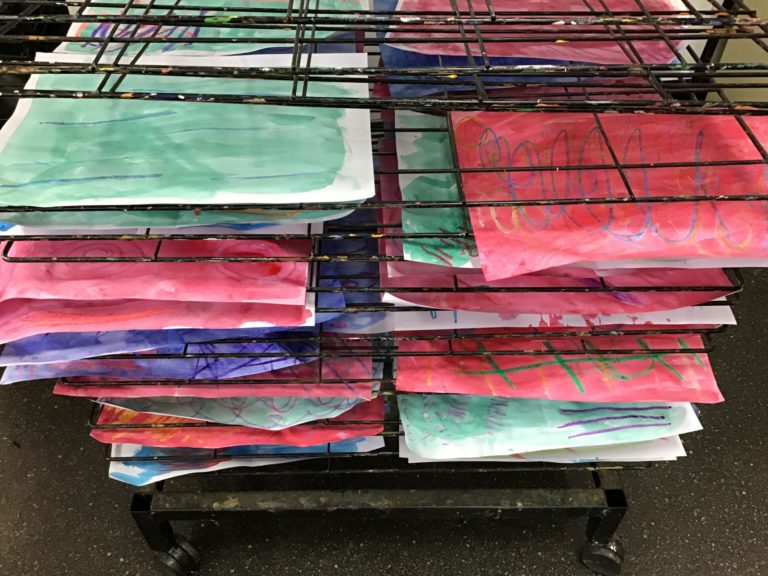
After the workshops, there was some additional fabrication before the work was installed.
“We didn’t have time during the workshops to complete the manipulation process, so I did that in my studio, then cut and collaged the papers on textile forms I had created in the shape of clothing that our protagonist wore.
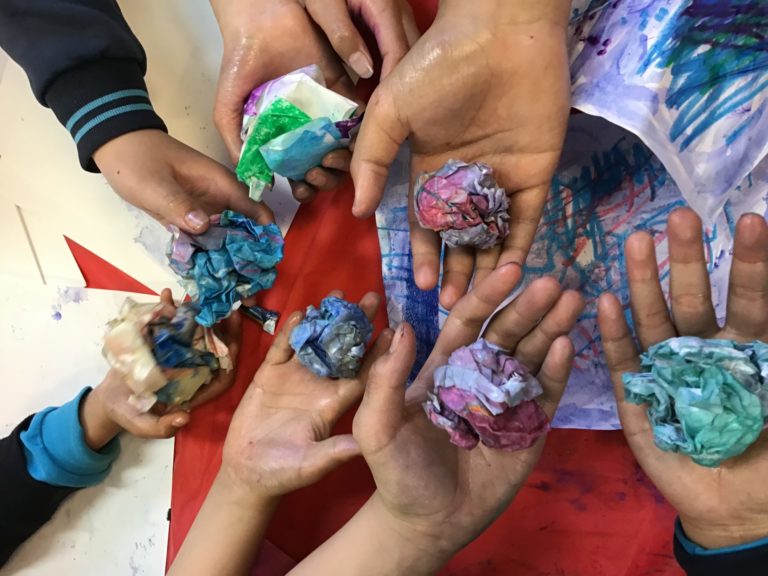
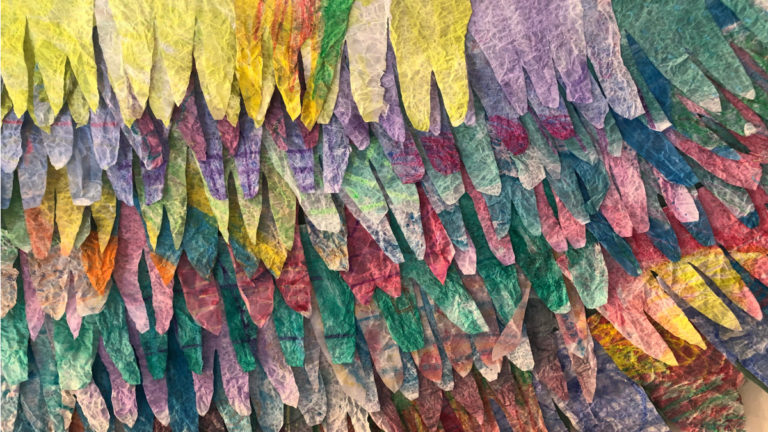
Student engagement delivers real rewards
As a visiting artist to schools, Ms Nelson says there are lots of benefits.
“Working collaboratively on a creative project is such an enriching process, I learn a lot about the people I’m working with, of course, which enhances my practice,” she told EducationDaily.
When the work was complete, Ms Nelson said it “was lovely” to see a few students and their families who were able to attend the official opening of the exhibition.
“Because their work had changed significantly during the process, I think it was a surprise for them to see the finished outcome, and fun to play a kind of spot-my-drawing game. Importantly, it was a beautiful affirmation for their creative voice to be heard in a public space,” she says.









